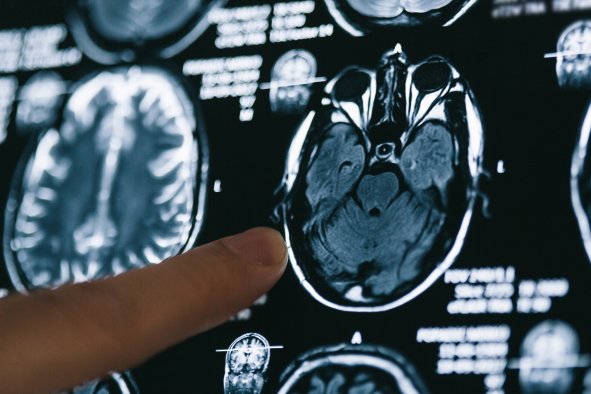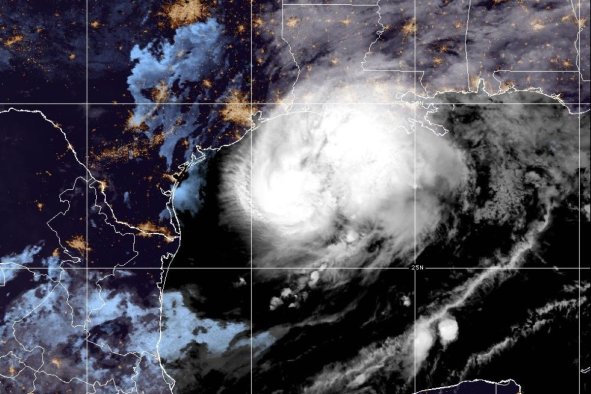Before squaring up for a fight, some fish check themselves out in the mirror to make sure they're big enough.
This strange behavior was seen in bluestreak cleaner wrasse (Labroides dimidiatus), who examined their own body size in the mirror before deciding whether or not to attack another fish that was larger or smaller than themselves, according to a new paper in the journal Scientific Reports.
These findings may mark the first time that mental body image has been seen in non humans, the researchers say.
"Cleaner fish will be the first non-human animals to be shown to possess private self-awareness," the researchers wrote in the paper.
Self-awareness in animals is often measured using a test known as the mirror self-recognition (MSR) test, which assesses an animal's ability to recognize itself in a mirror. Passing the test implies some level of self-awareness, as the animal understands that the reflection in the mirror is itself and not another animal.
"Self-awareness refers to the capacity to focus on oneself and identify one's own existence. The mirror self-recognition (MSR) test, which assesses the ability to recognize one's mirror reflection as oneself, is regarded as the most reliable evidence of self-awareness," the researchers wrote in the paper.
Animals that have been previously found to pass the MSR test include great apes, elephants, dolphins, Eurasian magpies, and bluestreak cleaner wrasse.
This paper, however, shows that the bluestreak cleaner wrasse not only passes the MSR test, but uses its reflection to make decisions.
The bluestreak cleaner wrasse is a small, brightly colored fish known for its mutualistic relationship with larger fish species, whom it "cleans" by eating parasites, dead skin, and mucus off their bodies. The cleaner wrasse gains food from eating parasites and dead tissue, while the larger fish benefit from having harmful organisms removed.
Bluestreak cleaner wrasses defend their "cleaning stations," with conflicts potentially arising if another cleaner wrasse enters their territory. Additionally, like many other fish species, cleaner wrasse can display aggressive behaviors when competing for mates.
The researchers showed the fish photographs of other bluestreak cleaner wrasse of varying sizes—10 percent smaller than them, the same size as them, and 10 percent larger—and recorded their behavior toward the photo after looking in the mirror.
They found that the fish behaved aggressively to all sizes of fish in the pictures, but were less aggressive toward the larger and same-sized fish compared to fish that were smaller than them.
"The findings indicate that mirror-experienced fish may reduce their aggression not merely due to habituation to the photographs presented twice but rather by improving their ability to discriminate 10 percent size differences between themselves and the photograph by attaining MSR," the researchers wrote.
"These findings suggest that cleaner fish construct a mental image of their body based on their mirror reflection by attaining MSR and make a decision whether to attack the photograph based on this mental representation."
This suggests that these fish may possess a mental image of their body and internal standards for comparing body size.
They also saw that when the fish was faced with a picture of the larger fish, they swam back and forth between the mirror and picture more, suggesting that the fish were predicting the outcome of the fight, and were therefore also capable of having intentions and goals.
"This study makes a noteworthy contribution by accumulating evidence of four mental states, in addition to the mental image of faces, thereby providing more robust support for the hypothesis that cleaner fish possess private self-awareness," said the researchers.
Do you have a tip on a science story that Newsweek should be covering? Do you have a question about self-awareness? Let us know via science@newsweek.com.
References
Kobayashi, T., Kohda, M., Awata, S., Bshary, R., & Sogawa, S. (2024). Cleaner fish with mirror self-recognition capacity precisely realize their body size based on their mental image. Scientific Reports, 14(1). https://doi.org/10.1038/s41598-024-70138-7
Disclaimer: The copyright of this article belongs to the original author. Reposting this article is solely for the purpose of information dissemination and does not constitute any investment advice. If there is any infringement, please contact us immediately. We will make corrections or deletions as necessary. Thank you.



